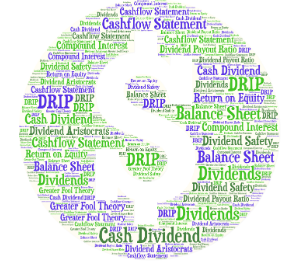Common Investment Terms Explained (Jargon Buster)
If you’ve ever felt overwhelmed by investment lingo, you’re not alone. From “dividends” to “asset allocation,” the financial world is filled with jargon that can make investing seem more complicated than it really is.
This guide is your go-to jargon buster breaking down common investment terms in simple, easy-to-understand language. Whether you’re new to investing or need a refresher, this post will help you feel more confident and informed.
1. Stock (Share/Equity)
A stock represents ownership in a company. When you buy a share, you own a piece of that company and may earn money if the value of the company grows or if it pays dividends.
Example: Buying a share of Apple means you own a small part of Apple Inc.
2. Dividend
A dividend is a portion of a company’s profit paid to shareholders—usually on a regular basis (quarterly or annually). Not all companies pay dividends.
Think of it as a reward for investing in the company.
3. Portfolio
Your portfolio is your collection of investments—including stocks, bonds, real estate, etc.
Just like a music playlist, your portfolio mixes different “tracks” (investments) to suit your taste (risk level).
📊 4. Asset Allocation
This refers to how you divide your money among different types of investments (e.g., 60% stocks, 30% bonds, 10% cash). It helps balance risk and reward based on your goals and tolerance.
A younger investor might go heavier on stocks, while someone nearing retirement may lean toward bonds.
5. Diversification
Diversification means spreading your money across different assets to reduce risk. If one investment performs poorly, others might perform well and help balance things out.
“Don’t put all your eggs in one basket.”
6. Bear Market
A bear market happens when the market drops 20% or more from recent highs. It signals investor pessimism and economic slowdown.
Bear = down (think of a bear swiping downward).
7. Bull Market
A bull market is when prices are rising steadily, often by 20% or more, signaling investor confidence and economic growth.
Bull = up (think of a bull charging upward).
8. Capital Gains
This is the profit you make when you sell an investment for more than you paid. If you sell for less, it’s called a capital loss.
Buy at $100, sell at $150 = $50 capital gain.
📉 9. Volatility
Volatility refers to how much the price of an investment goes up or down over time. High volatility = big swings; low volatility = stable prices.
Cryptocurrency is known for high volatility.
🏛 10. Index Fund
An index fund is a type of mutual fund or ETF that tracks a specific market index, like the S&P 500. It’s a passive way to invest in a broad range of companies.
Great for beginners and long-term investors.
11. ETF (Exchange-Traded Fund)
ETFs are similar to mutual funds but trade like stocks. They hold a basket of assets and are typically low-cost and easy to buy or sell.Example: An ETF might hold stocks of the top 100 tech companies.
12. Expense Ratio
This is the annual fee charged by mutual funds or ETFs to manage your investment. It’s shown as a percentage of your total investment.
A lower expense ratio means more of your money stays invested.
13. Time Horizon
Your time horizon is how long you plan to keep your money invested before you need to use it.
Short-term: 1–3 years | Long-term: 10+ years.
14. Risk Tolerance
Risk tolerance is your comfort level with investment losses or market swings. Everyone’s tolerance is different, and it affects how you build your portfolio.
Higher tolerance = more aggressive investments (like stocks).
15. Liquidity
Liquidity describes how easily you can convert an asset to cash without losing value.
Stocks are highly liquid. Real estate? Not so much.
Final Thoughts
Understanding these investment terms can help you:
-
Read financial news with more clarity
-
Ask better questions before investing
-
Make confident, informed decisions about your money
Remember: you don’t need to be a finance expert to be a smart investor. You just need the right knowledge—and now you have a solid head start.


